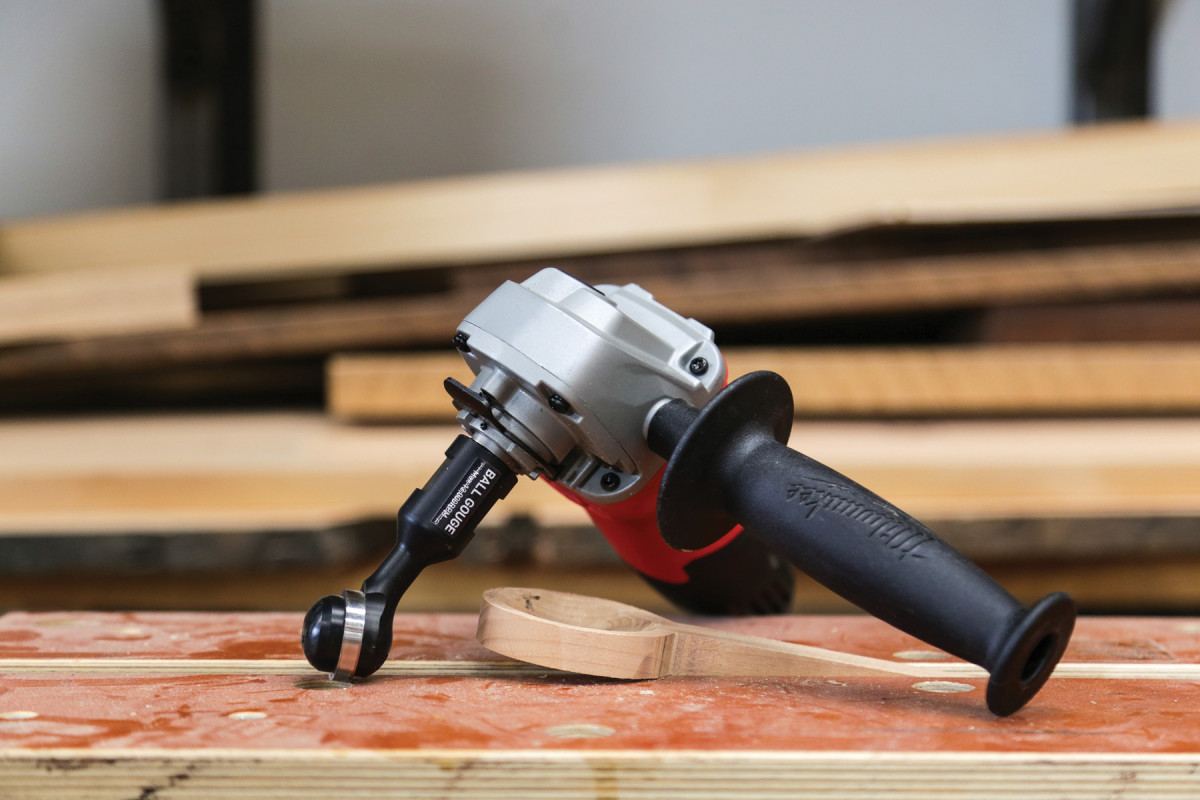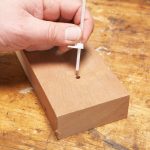We may receive a commission when you use our affiliate links. However, this does not impact our recommendations.

BYO grinder. Arbortech’s ball gouge is compatible with most 4″ and 41⁄2″ grinders with speeds between 9,000 and 12,000 RPM.
This attachment makes power carving hollows fast and fun.
Tool: Ball Gouge Buy Now
Manufacturer: Arbortech
MSRP: $109
The Arbortech ball gouge is one of the most fun tools I’ve used in recent memory. It turns an angle grinder – a relatively crude woodworking tool – into a more precise instrument that can still hog away lots of material quickly.
The first thing I did was thread this somewhat odd-looking attachment on to my angle grinder, don some safety apparel and see what kind of damage I could do to a piece of firewood. I was expecting to have to deal with some kind of kickback or employ a good bit of muscle to make it do what I wanted. But that wasn’t the case at all. It simply cut nice, rounded divots with a good deal of precision.
The attachment itself consists of a 13⁄16” diameter ball-shaped head with an integrated, replaceable cutter affixed to a steel shaft. It attaches via threads to an angle grinder. The gouge is designed to fit most 4″ or 41⁄2” grinders and work with speeds between 9,000 and 12,000 RPM.
The ring-shaped cutter is designed to self-sharpen in use. As the cutting edge of the cutter cuts, the back edge is burnished. That means you can rotate the cutter to expose a new sharp edge a few times before needing to replace the blade (a replacement cutter costs about $30).
My immediate thought with this gouge was to hollow out a stack of spoon blanks. And it sure did make quick work! Compared to using a handheld gouge or spoon knife and working by hand, it was (unsurprisingly) much quicker. The spoons still needed some finishing work by hand, but I got to that point quicker than I would have otherwise.
Then I set about hollowing out a larger piece of firewood to make a serving dish. This took a bit more time than the bowl of a spoon – in hindsight, I probably should have used a hatchet to get closer to the form I was going for before I used the ball gouge. But it was still surprising how quickly I could make a useable form.
The last thing I tried was making a patterned surface on a piece of flat stock. This was trickier than simple hollowing – especially achieving an even, repeated pattern – but still much easier than I thought it was going to be.
You’ll want to make sure you’re using adequate protection – safety glasses, hearing protection – and have your piece securely clamped to a stable work surface. You’ll notice that the ball gouge doesn’t create much dust – it’s mostly small shavings. You’ll also want to make sure you’re using your grinder’s auxiliary handle to keep two hands on the tool at all times. It makes controlling the tool much easier, and it keeps your hands out of the way of the spinning gouge. It’s not an insignificant investment at about $110 for the tool, but once you start using it, the creative juices start to flow and you really start having some fun.
Here are some supplies and tools we find essential in our everyday work around the shop. We may receive a commission from sales referred by our links; however, we have carefully selected these products for their usefulness and quality.









